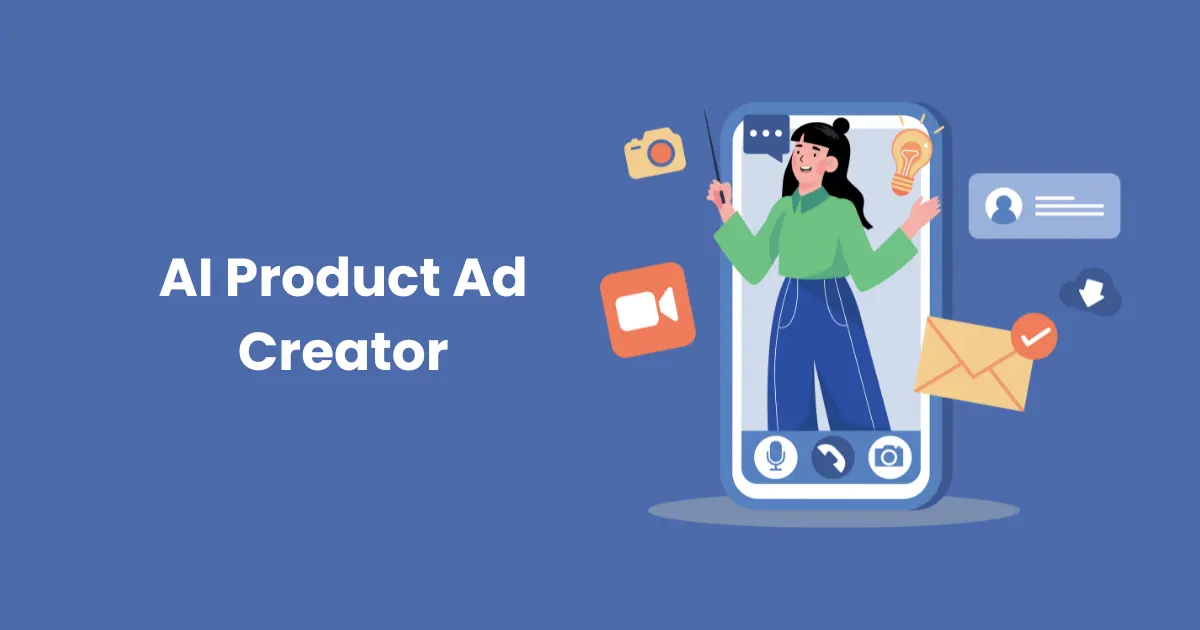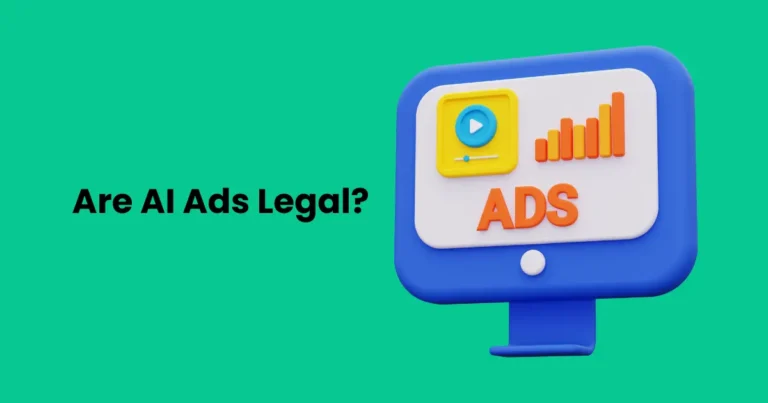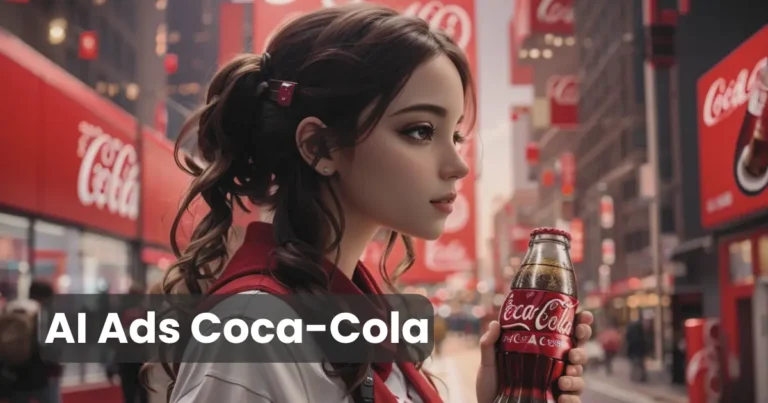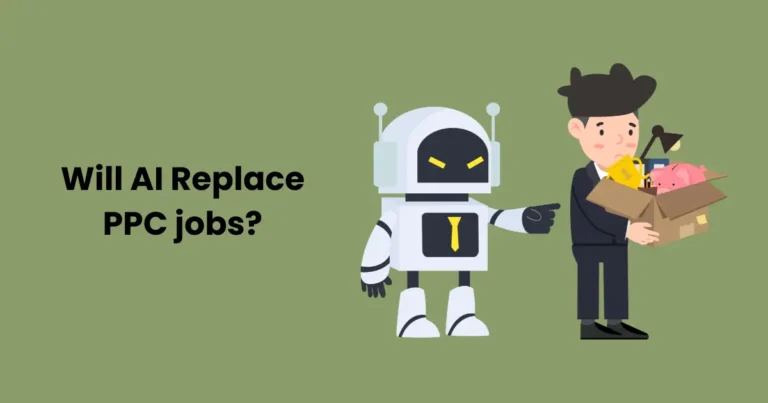How to Get Started with an AI product ads creator in 205

Contents
- 1 What is an AI Product Ads Creator?
- 2 Benefits of Using an AI Product Ads Creator
- 3 How AI Product Ads Creators Work
- 4 Top Features to Look for in an AI Product Ads Creator
- 4.1 1. Automated Content Generation
- 4.2 2. Audience Targeting and Segmentation
- 4.3 3. A/B Testing and Performance Optimization
- 4.4 4. Multi-Channel Integration
- 4.5 5. Customizable Templates and Designs
- 4.6 6. Real-Time Analytics and Reporting
- 4.7 7. Budget Optimization
- 4.8 8. Machine Learning and Predictive Analytics
- 4.9 9. Easy-to-Use Interface
- 4.10 10. Data Privacy and Security
- 5 Best AI Product Ads Creators in the Market
- 6 How to Get Started with an AI Product Ads Creator
- 6.1 Step 1: Define Your Goals and Objectives
- 6.2 Step 2: Choose the Right AI Product Ads Creator
- 6.3 Step 3: Set Up Your Account
- 6.4 Step 4: Upload Your Product Information
- 6.5 Step 5: Customize Your Ads
- 6.6 Step 6: Set Your Targeting Parameters
- 6.7 Step 7: Launch Your Campaign
- 6.8 Step 8: Monitor and Optimize Performance
- 6.9 Step 9: Experiment with A/B Testing
- 6.10 Step 10: Scale Your Campaigns
- 7 Common Challenges in Using an AI Product Ads Creator
In today’s competitive digital landscape, businesses are constantly seeking innovative ways to enhance their advertising strategies. One of the most effective solutions is the use of an AI product ads creator. This advanced tool harnesses the power of artificial intelligence to automate and optimize the ad creation process, allowing businesses to generate highly targeted ads with minimal effort. By using machine learning algorithms, an AI product ads creator can analyze customer data, predict trends, and deliver personalized ads that resonate with specific audiences. This not only improves the efficiency of advertising campaigns but also drives better results in terms of engagement and conversions.
What is an AI Product Ads Creator?
An AI product ads creator is a cutting-edge tool powered by artificial intelligence that automates the process of creating advertisements for products. It uses machine learning algorithms and data analysis to generate tailored ad content that resonates with specific target audiences. These tools are designed to optimize the creative process by leveraging customer data, behaviors, and preferences to craft highly personalized and engaging advertisements.
Unlike traditional ad creation methods, which often require manual input and creativity, an AI product ads creator streamlines the entire process. By analyzing large datasets, it can determine the most effective ad formats, messages, and visuals to use for a given audience. This enables businesses to create dynamic, data-driven campaigns that are more likely to capture attention and drive conversions.
AI product ads creators can work across multiple channels, including social media platforms, websites, and search engines. They can generate both visual and written content, such as banner ads, videos, and social media posts, all based on AI’s analysis of consumer preferences. The result is an efficient, scalable solution that helps businesses generate more impactful ads with less time and effort.
Benefits of Using an AI Product Ads Creator
Using an AI product ads creator brings numerous advantages to businesses looking to enhance their advertising efforts. Here are some of the key benefits:

Increased Efficiency
One of the most significant benefits of using an AI product ads creator is the dramatic increase in efficiency. Traditional ad creation processes can be time-consuming and resource-heavy, requiring creative teams to brainstorm, design, and test multiple variations. AI automates much of this process, allowing businesses to produce high-quality ads quickly and efficiently. This means more time can be spent on other critical tasks while AI handles the bulk of the creative work.
Personalized Ads
Personalization is crucial in today’s competitive marketing landscape, and AI product ads creators excel in this area. By analyzing vast amounts of customer data, including browsing history, demographics, and purchasing behavior, these tools generate highly personalized advertisements. Personalized ads are more likely to resonate with the audience, leading to higher engagement rates and increased conversion chances. Rather than creating generic ads, businesses can deliver messages that speak directly to the individual needs and desires of their customers.
Cost-Effectiveness
An AI product ads creator offers a cost-effective solution for businesses looking to optimize their advertising budgets. By automating much of the ad creation process, businesses can reduce the need for large creative teams or agencies. Additionally, the AI’s ability to optimize ads for better performance ensures that each ad dollar spent goes further, maximizing return on investment (ROI). The efficiency and automation offered by AI ultimately result in significant cost savings over traditional ad creation methods.
Scalability
As a business grows, its advertising needs evolve. An AI product ads creator is inherently scalable, allowing businesses to produce ads for a single product or an entire product range without sacrificing quality. Whether running a campaign for one product or hundreds, AI can handle the increased workload without slowing down. This scalability makes it an ideal solution for businesses looking to expand their reach across different platforms and target multiple audience segments simultaneously.
Data-Driven Optimization
AI tools continuously collect data on ad performance, enabling real-time optimization of campaigns. With A/B testing and performance analytics, businesses can fine-tune their ads to achieve the best possible results. The AI-driven approach ensures that ads are constantly evolving and improving, leading to more effective and higher-converting campaigns. This data-driven methodology enhances decision-making, allowing businesses to make adjustments quickly and based on actionable insights.
By utilizing these benefits, businesses can create more efficient, targeted, and cost-effective ad campaigns that resonate with audiences and deliver improved results.
How AI Product Ads Creators Work
AI product ads creators are powered by sophisticated algorithms and machine learning models that enable them to automate and optimize the ad creation process. These tools work by analyzing vast amounts of data, predicting trends, and generating personalized ads based on the specific needs of the target audience. Here’s a breakdown of how they operate:

Data Collection
The first step in the process is data collection. AI product ads creators rely heavily on data to inform their ad creation process. This data typically comes from a variety of sources, including user behavior, customer preferences, browsing history, social media interactions, and past campaign performance. By gathering this information, the AI can gain insights into what resonates most with specific audiences.
Audience Segmentation
Once the data is collected, the AI analyzes it to segment the audience based on various factors such as demographics, interests, purchasing behavior, and engagement history. Audience segmentation is crucial because it helps the AI understand who the target customers are and what kind of content will appeal to them the most. By dividing audiences into specific groups, the AI ensures that each ad is tailored to meet the needs of individual segments.
Content Generation
After segmenting the audience, the AI product ads creator generates content that matches the preferences and behaviors of each group. This can include various types of ads such as text-based ads, banner ads, video content, or social media posts. The AI will select the most appropriate visuals, copy, and calls to action (CTAs) based on what has been proven to work for similar audience groups. This process eliminates the guesswork and manual effort that would normally go into creating effective ad content.
A/B Testing
AI-powered tools often incorporate A/B testing, which allows them to test multiple variations of an ad to determine which one performs the best. In this process, the AI will present different versions of an ad to the target audience and monitor engagement and conversion rates. Based on this data, the system can make real-time adjustments, such as changing the copy, visuals, or CTA to improve ad performance. The continuous testing and optimization ensure that the ads remain effective throughout the duration of the campaign.
Ad Placement and Optimization
Once the content is generated, the AI product ads creator takes over the process of ad placement across different platforms. AI tools often integrate with advertising networks, such as Google Ads or Facebook Ads, to place the ads where they are most likely to reach the target audience. Additionally, the AI continuously monitors the performance of the ads and makes adjustments to improve their effectiveness. This can include altering targeting parameters, changing the bid strategy, or adjusting the creative elements to ensure the ads remain relevant and effective.
Analytics and Reporting
AI product ads creators also come equipped with robust analytics and reporting tools that allow businesses to track the performance of their campaigns. By collecting data on key metrics such as click-through rates (CTR), conversion rates, and engagement levels, the AI can generate insights into what’s working and what needs improvement. These analytics help businesses make informed decisions, ensuring that future ads are even more effective and tailored to the evolving needs of their audience.
In summary, AI product ads creators combine data analysis, audience segmentation, automated content generation, A/B testing, and continuous optimization to create highly targeted and effective ads. This automation allows businesses to run campaigns more efficiently while ensuring their ads are optimized for maximum impact.
Top Features to Look for in an AI Product Ads Creator
When choosing an AI product ads creator for your business, it’s important to consider several key features that will ensure the tool meets your needs and delivers optimal results. Below are the top features to look for:

1. Automated Content Generation
The primary strength of an AI product ads creator lies in its ability to automatically generate ad content. Look for a tool that can create both text and visual ads (e.g., banners, social media posts, video ads) based on your product data and audience preferences. The tool should be able to produce content that aligns with your brand and resonates with your target audience without requiring manual input for every campaign.
2. Audience Targeting and Segmentation
Effective ads are those that reach the right audience. A good AI product ads creator will offer advanced audience segmentation features. It should analyze user data, such as demographic information, interests, past interactions, and purchasing behavior, to segment the audience into specific groups. This ensures that each ad is personalized and tailored to the unique preferences of different audience segments, increasing the likelihood of engagement and conversion.
3. A/B Testing and Performance Optimization
An essential feature of an AI product ads creator is the ability to conduct A/B testing. The tool should allow you to create multiple versions of an ad and test them against each other to see which one performs best. Real-time performance optimization ensures that the AI continually refines your ads to achieve better results. Features like dynamic content adjustment, automated testing, and learning from ad performance are crucial for maximizing ad effectiveness.
4. Multi-Channel Integration
To ensure that your ads reach a broad audience, an AI product ads creator should seamlessly integrate with various advertising platforms. This includes social media networks (like Facebook, Instagram, and LinkedIn), Google Ads, display ads, and email marketing campaigns. Multi-channel integration helps streamline ad placement and ensures consistent messaging across all platforms, reaching your target audience wherever they spend time online.
5. Customizable Templates and Designs
While AI automation is key, customization remains important to maintain brand consistency. A high-quality AI product ads creator should offer a wide range of customizable templates and design options. This allows businesses to create unique, on-brand ads while taking advantage of the AI’s automation. Look for tools that let you adjust colors, fonts, layout, and visuals to ensure that the generated ads match your branding guidelines.
6. Real-Time Analytics and Reporting
Analytics are vital for measuring ad performance and making informed decisions. A good AI product ads creator should offer real-time tracking and comprehensive reporting features. It should provide insights into key metrics such as click-through rates (CTR), conversion rates, impressions, and return on investment (ROI). With detailed reports, you can assess the effectiveness of each ad and refine future campaigns based on data-driven insights.
7. Budget Optimization
A crucial feature of an AI product ads creator is the ability to optimize ad spend for maximum ROI. The AI should be capable of automatically adjusting bidding strategies and targeting parameters to ensure that your advertising budget is used efficiently. Whether you’re running a small campaign or managing a larger budget, AI tools can help you maximize the impact of every dollar spent.
8. Machine Learning and Predictive Analytics
The best AI product ads creators use machine learning to improve over time. These tools analyze data from previous campaigns to learn what works and what doesn’t. By using predictive analytics, the AI can forecast future trends and adjust ad strategies to align with upcoming consumer behaviors. This feature allows businesses to stay ahead of the curve and ensure their ads remain relevant.
9. Easy-to-Use Interface
Although AI can handle complex tasks, the tool itself should be user-friendly and intuitive. A good AI product ads creator should offer a simple, easy-to-navigate interface, even for users with limited experience in advertising or design. Features like drag-and-drop elements, easy ad customization, and clear dashboard layouts are essential for ensuring a smooth user experience.
10. Data Privacy and Security
Lastly, data privacy and security are critical when handling customer data for ad targeting. Choose an AI product ads creator that adheres to privacy regulations and ensures that customer data is securely stored and processed. Features like encryption, secure data handling, and compliance with GDPR and other privacy laws should be prioritized to protect both your business and your customers.
By ensuring that the AI product ads creator you choose includes these essential features, you can optimize your ad campaigns for better performance, increased engagement, and a higher return on investment. These tools provide businesses with the ability to automate and streamline ad creation while still delivering personalized, targeted ads that effectively connect with audiences.
Best AI Product Ads Creators in the Market
The market is flooded with a variety of AI product ads creators, each offering unique features designed to help businesses automate and optimize their advertising campaigns. Here are some of the best AI product ads creators currently available:

1. Google Ads
Google Ads is one of the most well-known and widely used platforms for creating product ads, and it integrates AI to optimize campaign performance. Google’s AI-driven tools help automate the creation of ads and ensure they are tailored to the right audience. With features like smart bidding, automated targeting, and responsive ads, Google Ads uses machine learning to maximize ROI and improve ad performance.
Key Features:
- Smart bidding for budget optimization
- Automated ad creation and testing
- Audience targeting based on behavior and demographics
- Real-time analytics and reporting
2. Facebook Ads Manager
Facebook Ads Manager offers powerful AI tools to help businesses create effective product ads. Using Facebook’s vast data on user behaviors, interests, and interactions, AI-driven tools automate ad creation, targeting, and optimization. The platform is known for its robust audience segmentation and personalization options, making it a top choice for businesses looking to run highly targeted campaigns.
Key Features:
- Automated ad creation for multiple formats
- Audience segmentation based on user data
- Advanced targeting options
- Real-time campaign analytics and performance tracking
3. AdRoll
AdRoll is an AI-powered marketing platform that specializes in retargeting and creating dynamic product ads. It helps businesses create personalized product ads that are displayed across multiple platforms, including social media, Google, and display networks. AdRoll’s AI algorithms optimize ad targeting and content based on customer data, ensuring ads are shown to the right people at the right time.
Key Features:
- Cross-channel ad campaigns
- Personalized and dynamic product ads
- AI-driven retargeting strategies
- Comprehensive reporting and analytics tools
4. Jasper AI
Jasper AI is a content generation tool that leverages artificial intelligence to create compelling ad copy for businesses. While it’s not a full-fledged ad platform, Jasper excels at generating creative, conversion-focused ad copy for various types of ads, including product advertisements. Businesses can input their product details, and Jasper will generate persuasive ad copy that’s optimized for engagement.
Key Features:
- AI-powered content generation for ad copy
- Optimized for conversion and engagement
- Multiple content templates for different ad types
- Integration with various ad platforms
5. Canva
Canva, a popular design tool, has integrated AI to help users create visually stunning product ads with ease. Canva’s AI-driven design suggestions help businesses choose the best templates, colors, fonts, and layouts for their ads, streamlining the ad creation process. Canva’s simple drag-and-drop interface, combined with AI tools, makes it accessible even for non-designers.
Key Features:
- AI-powered design suggestions
- Customizable templates for various ad formats
- Integration with social media and digital advertising platforms
- Easy-to-use, intuitive interface
6. Copy.ai
Copy.ai is an AI-based tool that focuses on generating high-quality copy for digital ads, including product advertisements. It uses natural language processing (NLP) to create engaging ad copy that resonates with target audiences. Businesses can generate multiple variations of ad copy to test and optimize for better performance.
Key Features:
- AI-generated ad copy with multiple variations
- User-friendly interface for ad creation
- Customizable tone and style for different audiences
- Integration with other marketing tools for a seamless workflow
7. Bannerflow
Bannerflow is an AI-powered platform designed for creating dynamic and personalized product ads, particularly banners. With Bannerflow, businesses can automate the creation of responsive banner ads and dynamically adjust them to fit various screen sizes and platforms. The platform also uses AI to optimize the ad’s performance in real time based on data insights.
Key Features:
- Automated ad creation for banners and display ads
- AI-driven optimization for performance
- Dynamic content personalization
- Collaboration tools for teams
8. Smartly.io
Smartly.io is a marketing automation platform that uses AI to help businesses optimize and scale their social media ads. It focuses on automating ad creation and testing across platforms like Facebook, Instagram, and Snapchat. The AI-powered features allow businesses to run highly personalized campaigns at scale, ensuring that ads are displayed to the most relevant audiences.
Key Features:
- AI-driven ad automation and testing
- Cross-platform ad campaigns (Facebook, Instagram, Snapchat)
- Real-time optimization and performance tracking
- Audience segmentation based on AI data insights
9. Scalenut
Scalenut is an AI-powered content creation platform that also offers ad copywriting services. It generates compelling product ad content tailored to specific customer segments using data-driven insights. Scalenut’s AI can optimize your ad copy for various platforms, ensuring that each ad reaches the right audience with the most effective message.
Key Features:
- AI-generated ad copy for product advertisements
- Customizable content based on audience needs
- Optimized for multiple advertising platforms
- Data-driven insights for better ad targeting
10. Phrasee
Phrasee is an AI-powered platform that specializes in creating optimized, brand-safe ad copy. It uses advanced natural language generation (NLG) techniques to create ads that resonate with your audience and drive conversions. Phrasee is designed to work across multiple channels, including email marketing, social media, and display ads, to maximize the effectiveness of your product advertisements.
Key Features:
- AI-generated copy optimized for conversions
- Brand-safe content generation
- Multi-channel integration for email, social media, and display ads
- Performance analytics and real-time optimization
Each of these AI product ads creators offers unique features to help businesses optimize and automate their ad creation process. By utilizing AI, these tools allow companies to generate targeted, personalized, and high-performing product ads with minimal effort. Whether you’re focused on creating visual content, ad copy, or optimizing performance, there is an AI solution to fit your advertising needs.
How to Get Started with an AI Product Ads Creator
Getting started with an AI product ads creator can streamline your advertising efforts, reduce manual work, and improve the effectiveness of your campaigns. Whether you’re a small business owner or a marketing professional, using an AI tool can significantly enhance your ability to reach your target audience and increase conversions. Here’s a step-by-step guide to help you get started:

Step 1: Define Your Goals and Objectives
Before diving into using an AI product ads creator, it’s essential to define what you want to achieve with your ads. Ask yourself questions like:
- Are you aiming to increase brand awareness or drive sales?
- Do you need to target a specific demographic or geographic area?
- Are you creating ads for social media, search engines, or display networks?
Understanding your goals will help you select the right AI tool and configure it properly to meet your business needs.
Step 2: Choose the Right AI Product Ads Creator
There are several AI tools available, each offering different features. When selecting the right AI product ads creator, consider the following:
- Features: Does the tool offer automated content generation, audience targeting, and performance optimization?
- Platform Compatibility: Ensure the tool integrates with the advertising platforms you plan to use (e.g., Google Ads, Facebook, Instagram).
- User Experience: Choose a platform that is easy to navigate and aligns with your skill level.
- Cost: Consider your budget and choose an AI tool that offers value for money based on the features it provides.
Some popular AI product ads creators include Google Ads, Facebook Ads Manager, Canva, and Smartly.io.
Step 3: Set Up Your Account
Once you’ve selected an AI product ads creator, you’ll need to set up an account. Most platforms will require you to create a business profile, provide billing details, and connect your existing social media or advertising accounts. For example, if you’re using Google Ads, you’ll need to link your Google account, while Facebook Ads will require integration with your Facebook Business Manager.
Step 4: Upload Your Product Information
Most AI product ads creators require basic product information to generate ads automatically. This includes:
- Product images and videos
- Descriptions and features
- Pricing and promotional details
- Target audience demographics
Some AI tools allow you to upload product feeds or sync with your eCommerce platform (e.g., Shopify, WooCommerce) to pull this data automatically.
Step 5: Customize Your Ads
While AI will handle much of the ad creation process, you can still add a personal touch to the generated content. Customize the templates provided by the AI tool to match your brand’s voice, colors, and messaging. Ensure the visuals, copy, and call-to-action (CTA) align with your goals.
Some platforms, like Canva or Smartly.io, allow you to tweak designs and text, while others may automatically adjust these based on your product details.
Step 6: Set Your Targeting Parameters
One of the key benefits of using an AI product ads creator is the ability to target specific customer segments effectively. Set up your audience targeting by defining:
- Demographics (age, gender, location)
- Interests and behaviors
- Previous interactions with your website or social media (retargeting)
- Device preferences (mobile or desktop)
Most platforms use AI algorithms to automatically optimize targeting, but you can still manually adjust these parameters to better suit your campaign.
Step 7: Launch Your Campaign
Once your ads are created and customized, you’re ready to launch your campaign. Make sure to:
- Choose your ad budget: Many AI product ads creators offer smart bidding features, where the AI adjusts your budget allocation in real-time to maximize ROI.
- Select the platforms where your ads will appear (e.g., Google Search, Facebook, Instagram).
- Set your ad schedule: Choose when you want your ads to be displayed (time of day, days of the week).
Once everything is set, click the “Launch” button to start running your campaign.
Step 8: Monitor and Optimize Performance
After launching your ads, the next step is to continuously monitor their performance. Most AI product ads creators offer real-time analytics and reporting tools that track:
- Click-through rates (CTR)
- Conversion rates
- Impressions and reach
- Return on investment (ROI)
With these insights, you can adjust your targeting, budget, and creatives to improve the performance of your ads. Some AI tools even automatically optimize campaigns based on real-time data, taking the guesswork out of manual adjustments.
Step 9: Experiment with A/B Testing
AI tools often allow you to run A/B tests, where multiple versions of your ads are tested against each other. This helps identify which creative, copy, or targeting strategy works best. Running A/B tests ensures that you continuously improve and refine your ad campaigns to achieve better results.
Step 10: Scale Your Campaigns
Once you’ve found an ad strategy that works well, consider scaling your campaign. AI tools can help you expand your reach, increase ad spend, or create additional ads based on your best-performing designs and strategies. Scaling can significantly boost your overall marketing efforts and help you reach a larger audience with minimal effort.
By following these steps, you can successfully get started with an AI product ads creator and take advantage of the automation and optimization features it offers. With AI handling much of the ad creation and optimization process, you can focus on other aspects of your business while ensuring your ads are effective and targeted. Whether you’re a small business or a large enterprise, leveraging AI in your advertising can help you stay ahead of the competition and maximize your ad spend.
Common Challenges in Using an AI Product Ads Creator
While AI product ads creators offer numerous advantages in terms of automation, targeting, and optimization, they also come with their own set of challenges. Understanding these potential obstacles can help businesses prepare and overcome them effectively. Here are some of the most common challenges faced when using AI product ads creators:

1. Limited Creativity and Customization
AI product ads creators are built to automate the ad creation process, but this can sometimes result in ads that lack a unique or creative touch. While these tools can generate professional-looking ads quickly, they may not always align perfectly with a brand’s tone or style. In some cases, the generated content may appear generic or too similar to other ads in the market, reducing its effectiveness.
How to Overcome It:
- Customize the generated content as much as possible by tweaking the design, copy, and layout.
- Consider using AI tools alongside human creativity for more original and brand-specific ads.
- Opt for AI tools that allow for greater design flexibility and creative freedom.
2. Data Privacy Concerns
AI-driven platforms rely heavily on customer data to target the right audience and optimize ad performance. However, the use of customer data raises concerns about privacy and compliance with regulations like GDPR (General Data Protection Regulation) and CCPA (California Consumer Privacy Act). Mishandling or improper use of personal data can lead to legal consequences and damage your brand’s reputation.
How to Overcome It:
- Ensure that you are compliant with all relevant data privacy regulations when using AI tools.
- Choose AI product ads creators that prioritize user privacy and have robust data security measures in place.
- Always request explicit consent from customers before using their data for targeting purposes.
3. Dependence on Platform Algorithms
AI product ads creators are often driven by the algorithms of the platforms they integrate with, such as Google Ads or Facebook. While these algorithms are designed to optimize ad targeting, they are not always perfect. In some cases, the AI may not fully understand your product or target audience, leading to ineffective ad placements or poor performance.
How to Overcome It:
- Regularly monitor the performance of your ads and make adjustments to the targeting, content, and budget.
- Test multiple campaigns and variations to ensure the AI is accurately optimizing your ads.
- Use AI tools that allow for manual adjustments to targeting and ad content if the automatic settings aren’t working as expected.
4. Cost Management
While AI tools promise to optimize ad spending, they can also lead to overspending if not carefully monitored. Some AI product ads creators use smart bidding or automatic budget allocation features that may push the ad budget too high without providing the desired results. For smaller businesses or those with limited marketing budgets, this can become a significant issue.
How to Overcome It:
- Set clear budget limits and ensure that the AI tool respects them.
- Use platforms that allow for more granular control over the ad spend, such as Google Ads or Facebook Ads Manager.
- Regularly review performance reports and adjust campaigns to ensure you are getting the most value for your money.
5. Over-Reliance on Automation
One of the key benefits of AI product ads creators is the automation of tasks like ad creation and optimization. However, an over-reliance on automation can lead to a lack of human oversight, which may result in poorly performing ads or missed opportunities. AI may not always capture nuances in your product or market that a human marketer would notice.
How to Overcome It:
- Use AI tools as an assistant, not a complete replacement for human creativity and decision-making.
- Regularly review and manually adjust campaigns to ensure they align with your marketing goals and brand voice.
- Keep experimenting and refining your approach based on real-time insights and customer feedback.
6. Limited Understanding of Niche Markets
AI tools often rely on large datasets to make predictions and optimizations. While this works well for broader markets, AI may struggle to effectively target niche audiences or understand the nuances of specific industries. For businesses targeting a small or specialized market, this can result in ineffective or irrelevant ads.
How to Overcome It:
- Provide as much detailed information as possible about your target audience to help the AI tool better understand your niche market.
- Opt for AI tools that offer advanced segmentation and targeting capabilities for specialized markets.
- Continuously monitor and tweak your targeting to ensure the ads are reaching the right audience.
7. Integration Challenges
Some AI product ads creators may not seamlessly integrate with other marketing tools or platforms that your business is using. For example, syncing your eCommerce platform, CRM software, or other advertising channels with an AI tool may require additional time and effort, and in some cases, it may not work as intended.
How to Overcome It:
- Choose AI platforms that offer integrations with a wide range of marketing tools and platforms.
- Work with developers or marketing specialists to ensure smooth integration between your AI tool and other systems.
- Consider using AI tools that provide an all-in-one solution to reduce the complexity of integration.
8. Performance Variability
Despite the advanced algorithms used by AI, the performance of product ads can still be inconsistent, especially in the early stages of a campaign. Variables like market trends, seasonal changes, and consumer behavior shifts can all affect ad performance. AI tools may take time to adjust and learn, which can lead to periods of suboptimal performance.
How to Overcome It:
- Be patient and allow the AI tool enough time to learn and optimize the campaign.
- Continuously monitor and analyze ad performance to identify any trends or patterns.
- Use A/B testing to quickly identify what works and what doesn’t, enabling faster adjustments.
Conclusion
In today’s competitive digital landscape, an AI product ads creator offers businesses the ability to create, manage, and optimize their ad campaigns with ease. By automating the ad creation process, targeting the right audience, and optimizing performance, AI tools can help businesses save time and resources while improving their return on investment. However, it is important to be aware of potential challenges such as limited creativity, data privacy concerns, and over-reliance on automation.
By understanding the benefits and common pitfalls of using AI for product ads, businesses can leverage these tools to their full potential. To get the most out of an AI product ads creator, it’s crucial to define clear goals, choose the right platform, and continually monitor and optimize campaigns. When used strategically, AI product ads creators can become a powerful ally in enhancing your advertising efforts, driving customer engagement, and ultimately boosting sales and brand visibility.






